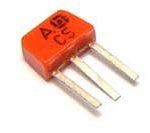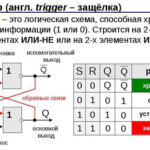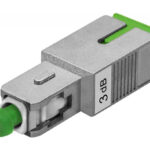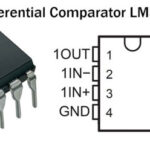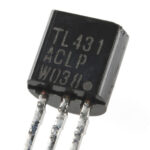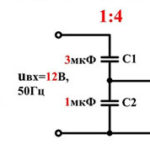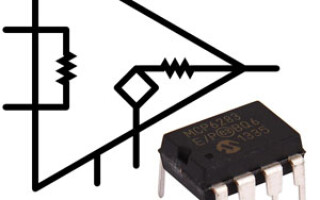Operational amplifiers (Op-Amps) are widely used in electronics and microcircuitry. It has excellent technical characteristics (TC) to amplify signals. To understand the uses of op-amps, you need to know its operating principle, wiring diagram and basic TCs.

Contents
What is an operational amplifier
An op-amp is an integrated circuit (IC) whose main purpose is to amplify dc values. It has only one output, which is called the differential output. This output has a high signal amplification factor (CU). Op-Amps are mainly used in the construction of circuits with negative feedback (feedback), which at the main gain TC determines the Q of the original circuit. DTs are used not only as separate ICs, but also in different blocks of complex devices.
Op-Amps have 2 inputs and 1 output, and also have outputs to connect the power supply (PSU). The principle of operation of an operational amplifier is simple. There are 2 rules taken as a basis. The rules describe the simple processes of operation of the IC, which take place in the op-amp, and how the IC works, it is clear even to dummies. At the output the voltage difference (U) is 0 and the inputs of the op-amp draw almost no current (I). One input is called non-inverting (V+) and the other is inverting (V-). In addition, the DUT inputs have a high resistance (R) and consume almost no I.
The chip compares the U values of the inputs and outputs the signal by preamplifying it. The DUT has a high value of up to 1000000. If a low input U occurs, it is possible to get a value equal to the power supply U (Uip) at the output. If the U at the V+ input is greater than the V-, then the output will have a maximum positive value. If the positive U of the inverting input is energized, the output will have the maximum negative voltage value.
The basic requirement for the operation of the op-amp is the use of a bi-polar power supply. It is possible to use a unipolar power supply, but in this case the potential of the DT is severely limited. If you use a battery and take the positive side of the battery as 0, you will get 1.5 V when measuring values. If you take 2 batteries and connect them in series, then addition of U will occur, i.e. the device will show 3 V.
If you take the minus terminal of the battery as zero, the instrument will show 3 V. In the other case, if you take the plus lead as 0, it will show -3 V. If you use the point between the two batteries as a zero you get a primitive bipolar power supply. You can only check if the op amp is working properly when you connect it to the circuit.
Types and markings on a circuit
With the development of electrical circuitry, operational amplifiers are constantly being improved and new models appear.
Classification by application area:
- Industrial - the low-cost option.
- Presynchronous (precision measuring equipment).
- Electrometric (low Iin).
- Micro-powered (low I power consumption).
- Programmable (currents are set with I external).
- Powerful or high-current (outputs more I to the consumer).
- Low-voltage (works at U<3 V).
- High voltage (designed for high U values).
- Fast acting (high slew rate and amplification frequency).
- Low noise type.
- Sound type (low harmonic distortion).
- For bipolar and unipolar type of electrical supply.
- Differential (able to measure low U with high noise). Used in shunts.
- Off-the-shelf amplifier stages.
- Specialized.
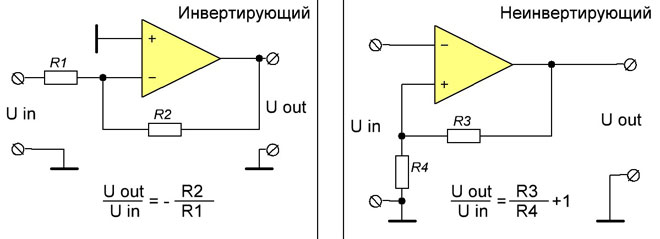
Op-Amps are divided into 2 types according to input signals:
- With 2 inputs.
- With 3 inputs. The 3rd input is used to extend the functionality. It has an internal feedback.
The circuit of the operational amplifier is complicated enough, and it does not make sense to make it, and the radio amateur only needs to know the correct circuit of the operational amplifier, but for this you should understand the deciphering of its outputs.
Main designations of IC pins:
- V+ - non-inverting input.
- V- - inverting input.
- Vout - output.Vs+ (Vdd, Vcc, Vcc+) - positive terminal of the power supply.
- Vs- (Vss, Vee, Vcc-) is the minus terminal of the power supply.
Virtually any Opus has 5 pins. However, some varieties may not have a V-. There are models that have additional outputs that extend the capabilities of the Op-Amp.
The power leads do not have to be labeled, as this increases the readability of the circuit. The power lead from the positive terminal or pole of the power supply is placed at the top of the circuit.
Main Characteristics
DUTs, like other radio components, have TCs, which can be divided into types:
- Amplifying.
- Input.
- Output.
- Power.
- Drift.
- Frequency.
- The speed response.
The gain is the main characteristic of Op-Amp. It is characterized by the ratio of the output signal to the input signal. It is also called the amplitude or transfer ТХ, which is represented in the form of dependence plots. The input quantities include all quantities for the DT input: Rin, offset currents (Icm) and offset currents (Iin), drift and the maximum input differential U (Udifmax).
Icm is for the operation of the op-amps at the inputs. Iinx is needed for the operation of the input stage of the op-amp. Ivh shift is the difference of Icm for the 2 input semiconductors of the Op-Amp.
During the construction of circuits you need to take these I's into account when connecting resistors. If Iinx is not taken into account, it can create a differential U, which will lead to incorrect operation of the op-amp.
Udifmax is the U that is supplied between the inputs of the op-amp. Its value characterizes the exclusion of damage to the semiconductors of the differential stage.
For reliable protection, 2 diodes and a stabilizer are connected in counter-parallel between the inputs of DT. The differential input R is characterized by the R between the two inputs and the common-mode input R is the value between the 2 inputs of the DT that are combined and the ground. The output parameters of DUTs are the output R (Rout), the maximum output U and I. The R out parameter should be smaller in value to achieve the best gain characteristics.
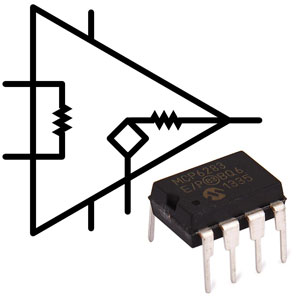
An emitter repeater must be used to achieve a small R-value. The I out is changed with a collector I. The power TCs are evaluated by the maximum power consumed by the Op-Amp. The cause of incorrect operation of Op-Amp is the scattering of the TC of semiconductors of the differential amplifier stage, which depends on the temperature characteristics (temperature drift). The frequency parameters of Op-Amp are basic. They contribute to the amplification of harmonic and pulsed signals (speed response).
A capacitor is included in general and special type op-amp ICs, which prevents generation of high-frequency signals. At low frequencies the circuits have a large K-factor without feedback (OS). Non-inverting switching is used in the case of OC. Also in some cases, for example when making an inverting amplifier, OC is not used. In addition, op-amps have dynamic characteristics:
- The rate of rise of the Uv (SN Uv).
- Uv setting time (response of the op-amp when the U is spiked).
Where to use
There are two types of Op-Amp circuit that differ in the way they are connected. The main disadvantage of Op-Amps is the variability of Q, which depends on the mode of operation. The main applications are amplifiers: inverting (IU) and non-inverting (NIU). In the LUT circuit, Q on U is set with resistors (the signal must be fed to the input). Op-Amp contains a series-type feedback. This connection is made to one of the resistors. It is only fed to V-.
In the DUT there is a phase shift in the signals. In order to change the sign of the negative output voltage a parallel operation of U is necessary. The input, which is a non-inverting input, must be grounded. The input signal is fed through a resistor to the inverting input. If the non-inverting input goes to ground, the U difference between the Op-Amp inputs is 0.
We can distinguish between devices in which DUTs are used:
- Preamplifiers.
- Amplifiers of audio and video frequency signals.
- U comparators.
- Difusers.
- Differentiators.
- Integrators.
- Filter elements.
- Rectifiers (high accuracy output parameters).
- U and I stabilizers.
- Analog calculators.
- ADC (analog-to-digital converters).
- DAC (digital to analog converters).
- Devices for generating various signals.
- Computer hardware.
Operational amplifiers and their applications have become widespread in a variety of equipment.
Related articles:
